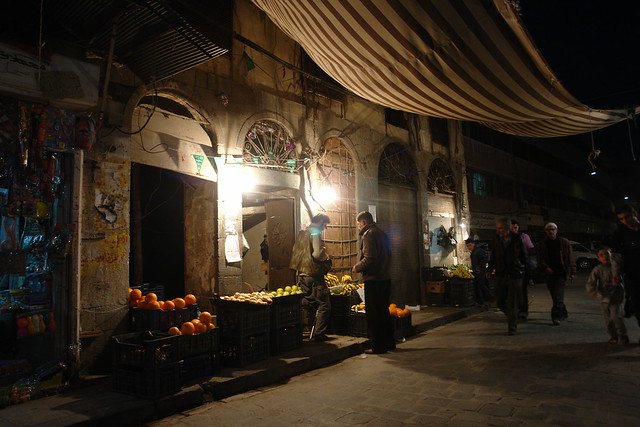Sometimes it’s easy to follow along the news and never really connect the dots. I would venture to say that everybody has heard about the civil war in Syria, although as the novelty wears off it sadly gets less and less news coverage, though conditions for locals are far from improving. I most certainly was aware about the background and have the BBC to thank for occasional updates on the situation, but until recently I never really thought about the consequences of the destruction on my study area – how does the civil war affect food security and agriculture in Syria?

At the end of January, the UN’s Food and Agricultural Organization (FAO) sent a mission to investigate exactly that question and came back with astounding and worrying figures:
- To set the background: 46% of the Syrian population live in rural areas; and of those, 80% derive their livelihood from agriculture. Before the war, agriculture employed 17% of the workforce and accounted for 21% of the country’s gross domestic product.
- According to the FAO mission, in the 22 months of conflict agricultural damages and losses are estimated at $1.8 billion! In 2012, wheat and barley production dropped by more than half (from 4 – 5 million tonnes to around 2 million). In the investigated areas, there was a 60% drop in vegetable production and significant decreases in fruit and olive oil production. There was a huge lack of seeds, fertilizer, fuel and other agricultural inputs.
- In this extremely water-scarce region, major irrigation canals (especially in the area of Homs) have been destroyed through the conflict, threatening food security in the longer term as well.
- The lack of access to feed and other inputs and the destruction of major poultry farms in Homs, Hama and Idleb has seriously crippled livestock industries (especially poultry meat is a traditional protein source) – in addition, movement of livestock to grazing areas has been limited through the fighting and several veterinary drugs are placed under sanctions and cannot be imported.
- Additionally, wheat traders have challenged the Syrian government’s assertion that there is enough wheat in storage for the coming 12 months and highlighted the logistical challenges of trading in a danger zone. This report even states that prices for bread have quadrupled compared to original market prices.
- This means that at the end of January, 4 million people were at risk of food insecurity – the threat of which rises over winter, when food and fuel prices rise (the price of basic food commodities like wheat, sugar, and bread had risen over 100% in some parts of the country).
It is easy to forget that beyond the fighting, beyond the refugee situation, also the operation of day-to-day business for farmers, millers, bakers, etc. is seriously jeopardized by the state of insecurity and anarchy the country finds itself in. Therefore, bringing food to the people can be an important bargaining chip by both sides of the conflict (read here a story about Jihadi fighters stepping in to alleviate the ‘bread crisis’) – putting a whole new spin to the term ‘food politics’.
In response to this crisis, the World Food Programme has scaled up its efforts in early February to reach as many as 2.5 million Syrians in April with a basic food basket. Yet, while that effort is certainly remarkable, the destruction of the livelihoods lost will take more than one season to remedy – let’s hope the world community is paying enough attention to Syria in the coming years to help it reconstruct its agricultural sector sufficiently once the conflict is over…